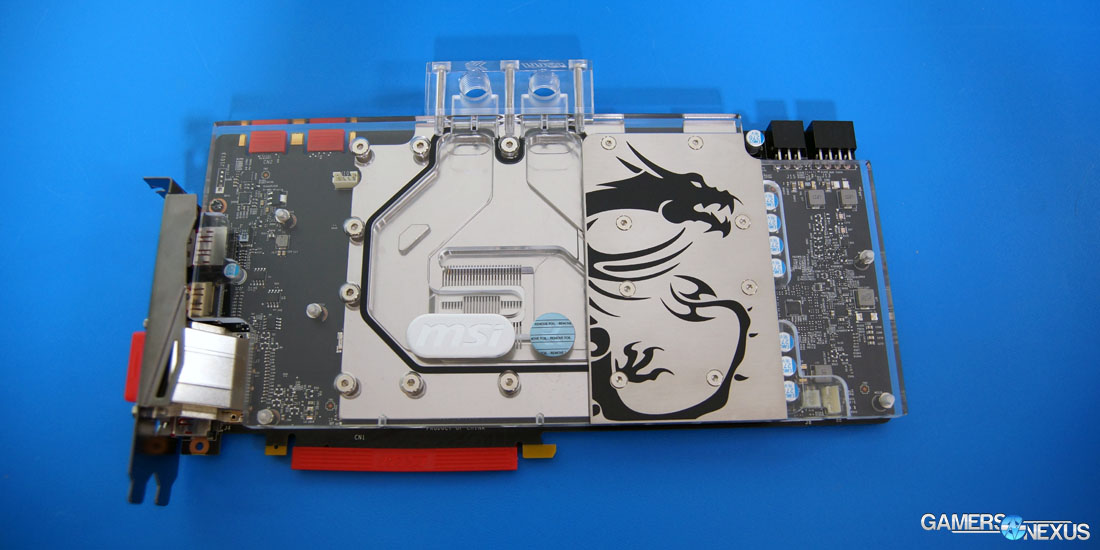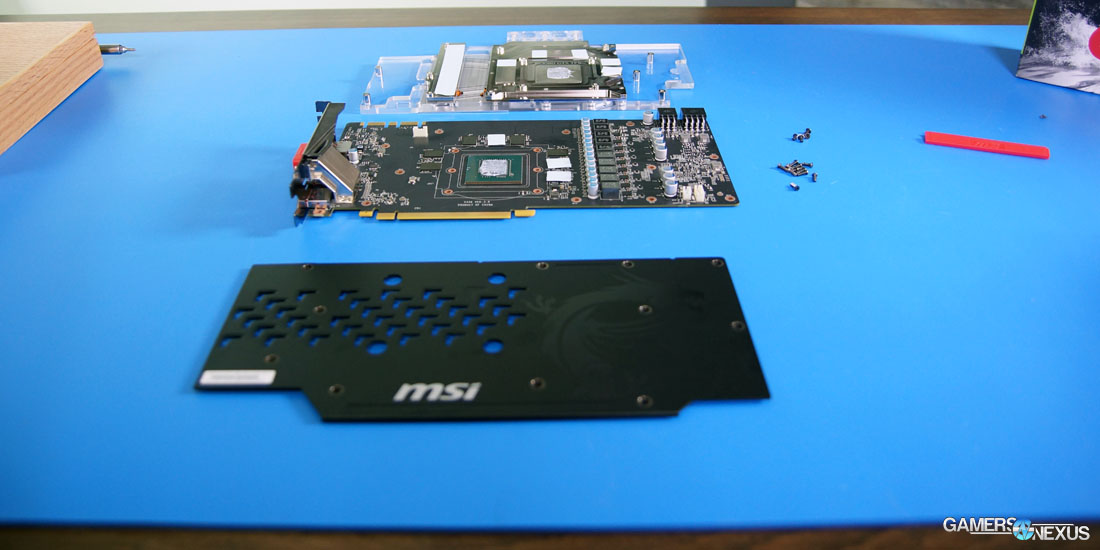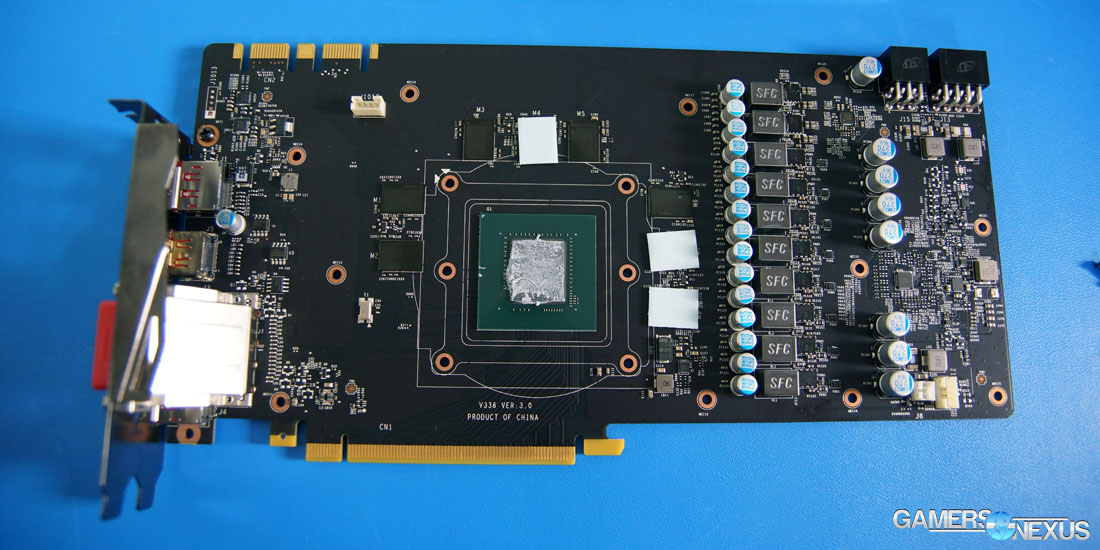Upon return home from PAX, we quickly noticed that the pile of boxes included an MSI GTX 1080 Sea Hawk EK graphics card, which use a pre-applied GPU water block for open loop cooling. This approach is more traditional and in-depth than what we've shown with the AIO / CLC solutions for GPUs, like what the EVGA GTX 1080 FTW Hybrid uses (review here).
The Sea Hawk EK ($783) partners with, obviously, EK WB for the liquid cooling solution, and uses a full coverage block atop a custom MSI PCB for cooling. The biggest difference in such a setup is coverage of the VRAM, MOSFETs, capacitor bank, and PWM. The acrylic is channeled out for the inductors, so their heat is not directly conducted to the water block; this would increase liquid temperature unnecessarily, anyway.
We won't be fully reviewing this card. It's just not within our time budget right now, and we'd have to build up a wet bench for testing open loop components; that said, we'll soon be testing other EK parts – the Predator, mostly – so keep an eye out for that. The Sea Hawk EK was sent by MSI before confirming our review schedule, so we decided to tear it apart while we've got it and see what's underneath.
The GPU mounting socket is used to secure the block to the PCB, sticking to four screws (no springs, this time) and thermal pads for non-GPU contact. EKWB and MSI use high-quality thermal pads to contact the VRAM and VRM components (capacitor bank, MOSFETs), with thermal compound spread between the GPU and a nickel-plated coldplate.
Top-side, liquid flows through the inlets to pull heat away from the board, eventually feeding the liquid through radiators within the system for dissipation.
Eleven screws (Phillips A1) secure the backplate to the card, though its removal is not necessary to access the water block or front-side of the PCB. That's it. This is one of the easiest cards we've worked with, in terms of disassembly, though it's already fairly barebones given the advanced cooling solution.
Check back shortly for EK Predator coverage.
Editorial: Steve “Lelldorianx” Burke
Video: Andrew “ColossalCake” Coleman



